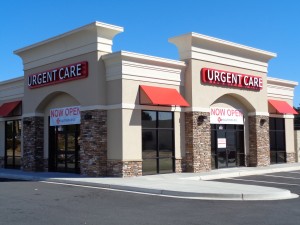In the case of a sudden emergency, obtaining quick medical attention is crucial. Choosing the appropriate place of care ensures prompt medical attention and lower costs. Making the wrong choice can result in delayed medical attention, and may cost hundreds, if not thousands of dollars. If you or someone you know suddenly falls ill or becomes injured, how can you determine which facility is most appropriate? Do you know the difference between an emergency room and urgent care? What services does each facility provide? If you don’t know the answers, don’t worry, we can help explain the difference.
Emergency Room
The emergency room is equipped to handle life-threatening injuries and illnesses and other serious medical conditions. An emergency is a condition that may cause loss of life or permanent or severe disability if not treated immediately Patients are seen according to the seriousness of their conditions in relation to the other patients. Go directly to the nearest emergency room if you experience any of the following:
- Chest pain
- Shortness of breath
- Severe abdominal pain following an injury
- Uncontrollable bleeding
- Confusion or loss of consciousness, especially after a head injury
- Poising or suspected poisoning
- Serious burns, cuts or infections
- Inability to swallow
- Seizures
- Paralysis
- Broken Bones
Urgent Care
Urgent care facilities are not equipped to handle life-threatening injuries, illnesses or medical conditions. These centers are designed to address conditions where delayed treatment could cause serious problems or discomfort. Some examples of conditions that require urgent care are these:
- Ear infections
- Sprains or strains
- Urinary tract infections
- Vomiting, diarrhea or dehydration
- High fever or the flu
- Controlled bleeding or cuts that require stitches
- Diagnostic services (X-ray, lab tests
Choosing the wrong facility
If you go to the Emergency Room with a relatively minor injury or illness, you will most likely have to wait to be seen. Depending on the severity of the other patients’ conditions, you may have to wait more than an hour to be seen. Most often you could have been seen more quickly at an urgent care facility. And you will also end up with a higher bill by visiting an Emergency Room. Most insurance plans offer a discounted co-pay if you go to an urgent care vs going to the emergency room. For example a plan may have a $250 Emergency Room co-pay vs a $75 Urgent Care co-pay. If your plan does not have a co-pay and your visit is subject to your deductible and co-insurance you will still most likely have a lower charge from an Urgent Care facility vs an Emergency Room.
Know the difference between an Emergency Room and Urgent Care
Knowing the difference between an Emergency Room and Urgent Care will help you determine the best facility for you or a loved ones medical emergency, as well as saving you time and money if it is determined that care can be received at an Urgent Care. Understanding your health insurance plan is also important. Co-pays, deductibles and coinsurance are all very important parts of your plan.
Click here to learn more about health insurance benefits.
Please share if you found this information helpful.
